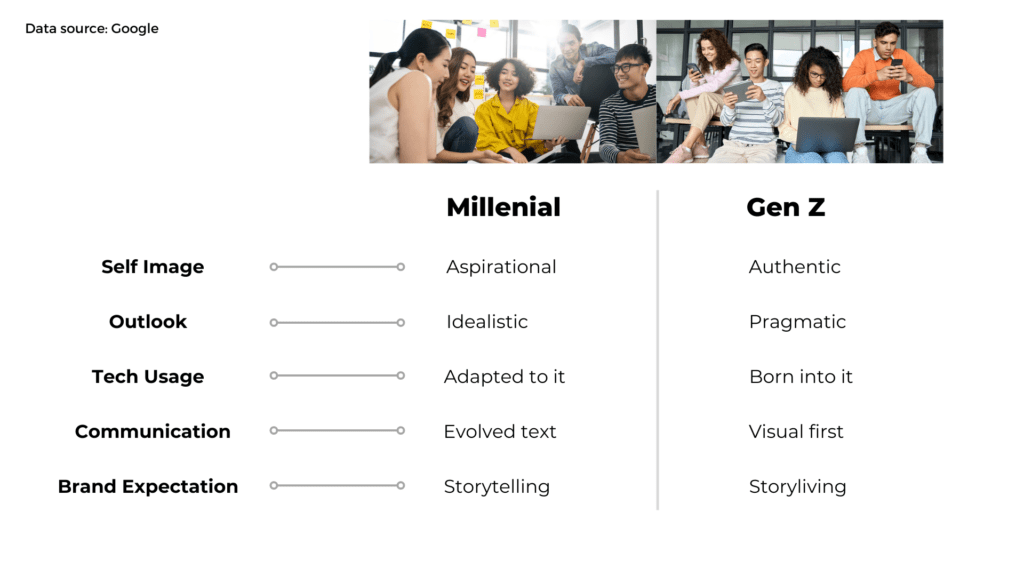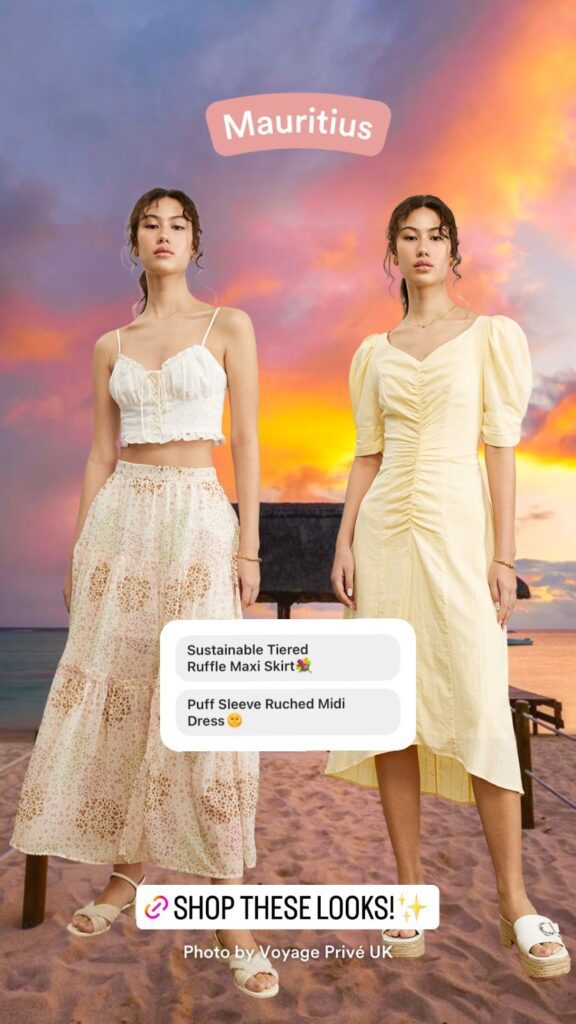Who is Gen Z?
Gen Z, or commonly referred as The Digital Natives, is expected to make up a quarter of Asia Pacific’s population by 2025. A Business Insider’s report in 2020 estimated that Gen Z are projected to have a spending power worth of $140 billion globally by the end of 2030.
With Gen Z’s presence in the global market, it provides an opportunity for brands to market to these younger generations.
However, brands are facing challenges to engage them the right way. Therefore, it is necessary to learn about Gen Z’s preferences and traits in general.
1. Gen Zs Have a Unique Behaviour
Based on a report by Data Reportal in 2021, people aged 16 to 24 across South East Asia spend roughly 60 percent of their time online. This means that they spend an average of more than 10-hours per day using internet-connected devices.
Since Gen Z have their own distinctive behaviours, brands should not lump them up with the millennial counterpart.
The differences between Gen Z and Milennials

A study done by the GWI on worldwide social media trends in 2020 has gathered interesting insights about Gen Z’s social media consumption.
2. Gen Z Like Everything to Be Quick
Gen Z have a short attention span of 8 seconds compared to millennials. This behaviour may pose challenges for brands to engage them. When it comes to advertisement, Gen Z prefers formats that are more interactive and less disruptive.
Attention span of Gen Z and Millennial:
3. Gen Z Are Conscious Consumers
Generally, Gen Z are concerned about every impact of their consumption behaviour. They love to purchase from brands with clear values and strong commitment to address societal and environmental challenges.
Among Gen Z in Singapore, a study by Milieu in 2020 shows that environmental and mental health were the most concerning issues. More than 49% respondents consider these as issues that need to be addressed immediately.
How to Engage Gen Z in the Right Way?
1. Amplify Brand Beliefs and Be Authentic
Brands need to amplify their beliefs and values in the right way. Gen Z are willing to do in-depth research into a brand’s website and social media, such as, by reading comments and reviews.
This means that companies must be transparent with their practices and be accountable for every action they take.
These audiences want brands to be 100% authentic. They do not fall for self-proclaimed marketing buzzwords. Avoid making any insubstantial claims like:
- “Our product is sustainably sourced”
- “It is cheap and chemical-free”
- “It is made from 100% recycled materials”
Gen Z will not be convinced until you can prove it. Take a look at how these brands amplify their beliefs and values. Take a look at how these brands amplify their beliefs and values.
Superdry and Oatly amplified their transparency by creating videos explaining their sustainability efforts.
2. Humanise the Brand
Bragging about certain features of a product may not be a go-to option. Marketers have to find angle that make Gen Z consumers feel connected to the brand.
An important step is to build a brand personality. Gen Z prefer brands with an engaging brand voice. Brands should not be afraid to make waves and splash a bit of a personality in their marketing campaigns.
@patagonia Follow me, I know a spot. #MTB ♬ r&b loop – Official Sound Studio
3. Experiment with Interactive and Engaging Content
In a recent GWI study, 56% of surveyed Gen Z consumers worldwide show a strong affinity for brands that come across as trendy or funny. Research suggests brands to experiment with creativity and interactivity to engage the younger audiences.
In other words, Gen Z loves to be personally involved or noticed. Here are some of the formats to use:
Questions & Answers
Doing a Q&A with the followers is a way to show that brands care about them. This is also an opportunity to learn more about your audience.



Live
With the live features on Instagram or TikTok, it allows brands to connect directly with their audience. Brands can also collaborate with influencers to gain more traction in the digital space.
Reels or TikTok
Through this format, brands can promote products through combining educational and fun content. With short and snappy videos, brands can transform long-form information into 30 – 60 seconds of content.
4. Inform and Entertain
Always make sure that your content is informative and fun at the same time. Explore ideas to promote the product or service and experiment with new things, e.g. by sharing ideas or driving user-generated content. With a short attention span, brands have around 8 seconds to capture the audience’s interest.
5. Embrace Diversity & Inclusion
As one of the most diverse generations, Gen Z care about diversity in advertising. Therefore, brands need to embrace Diversity & Inclusion (D&I) in a tangible way.
Embracing D&I means embracing the differences in races, socioeconomic, genders, sexual orientations, and cultural beliefs. Young consumers demand to see real people in ads, which means people who represent the broad spectrum that exists in the society.
Marketing to Gen Z customers requires a bit of finesse. To successfully engage the Gen Z, brands also need to understand their behaviour and tailor the marketing strategy based on their preferences.
Looking forward to taking Gen Z marketing to the next level? Contact us to find out how we can help your business.



